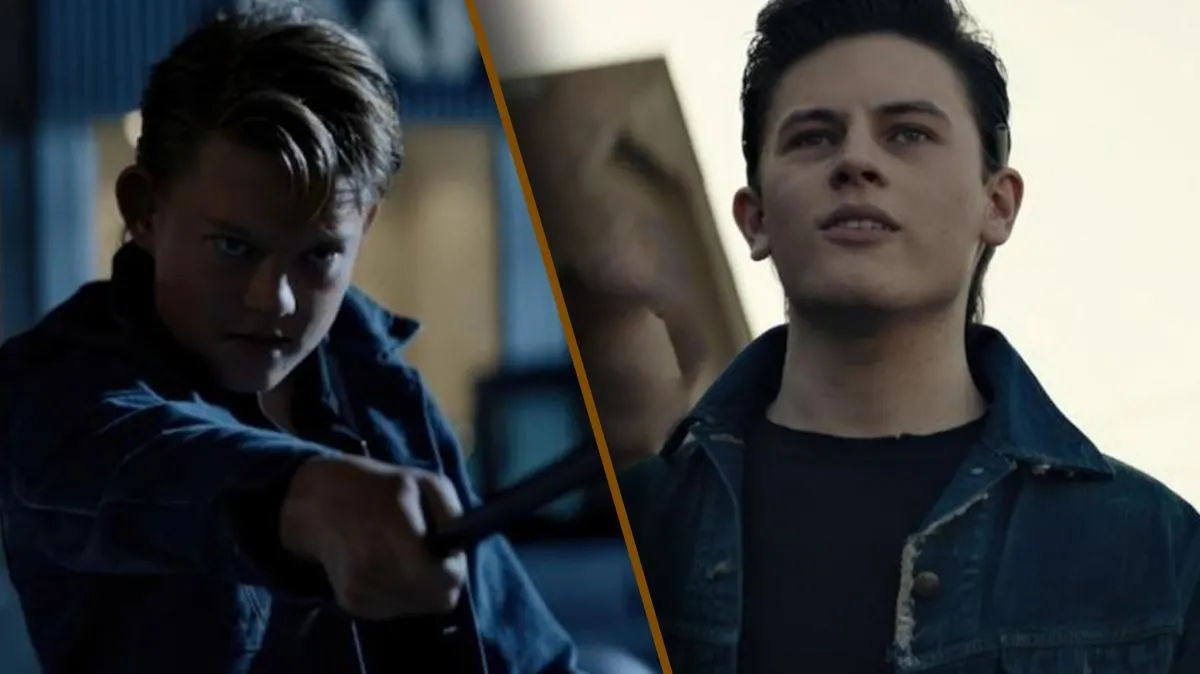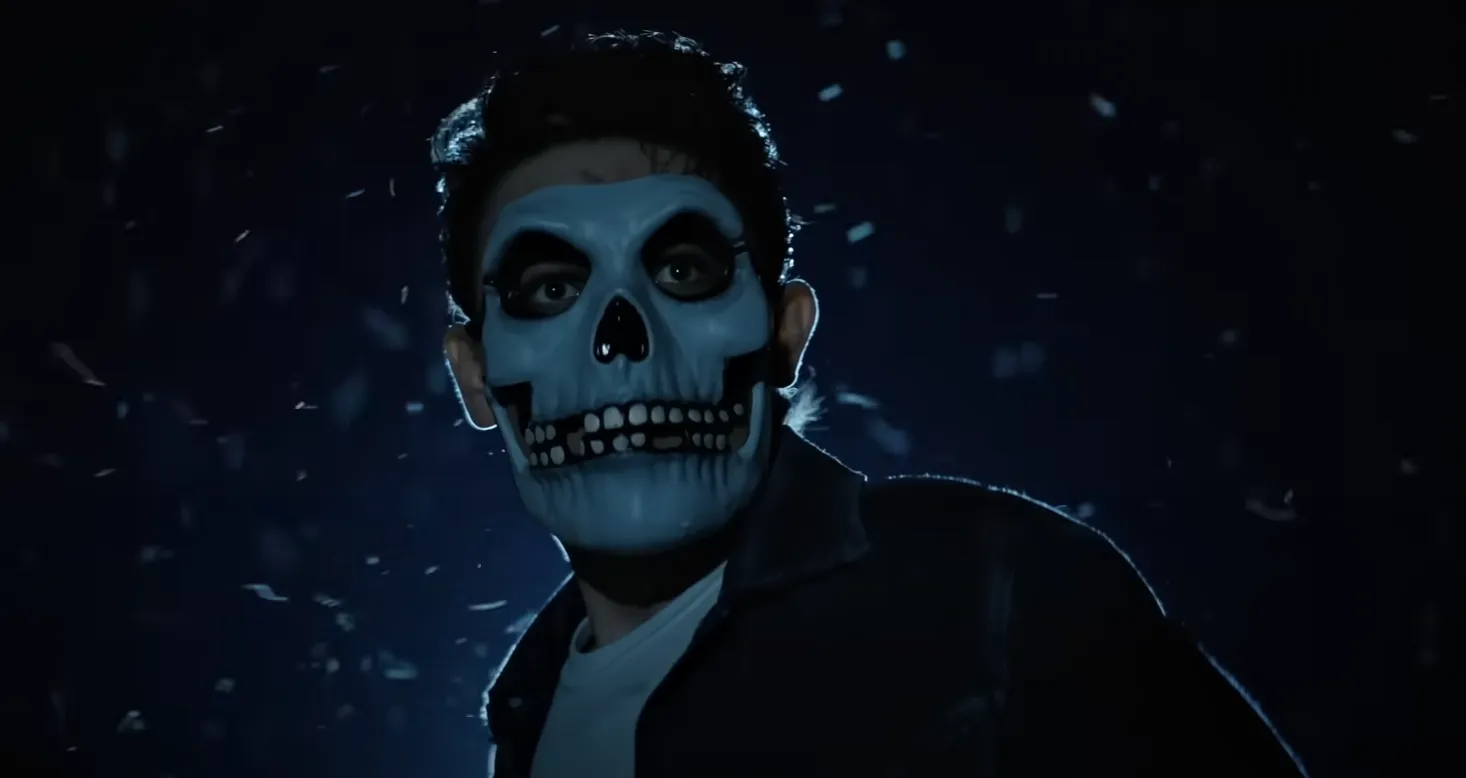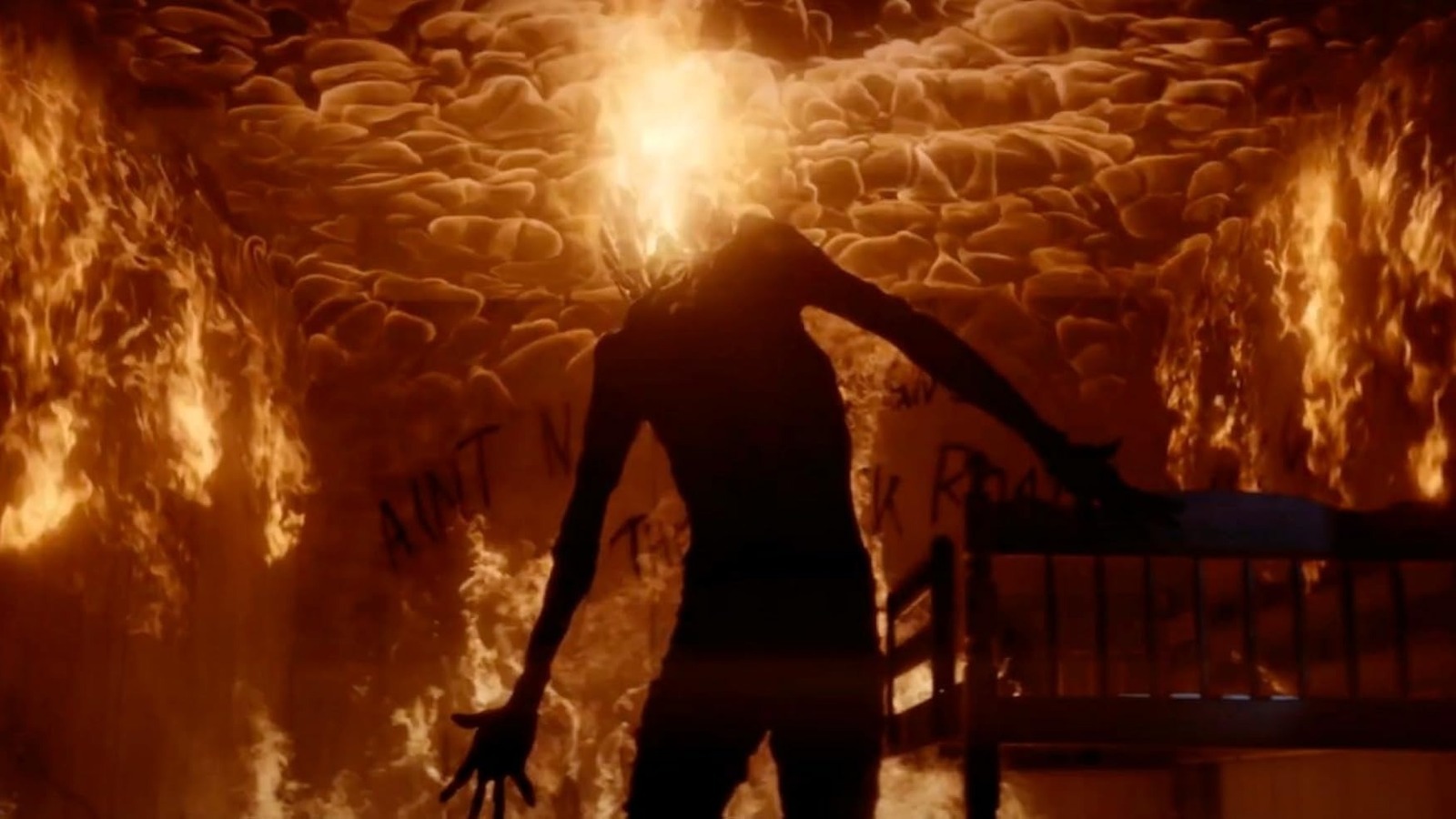The rise of young adult dystopian stories in the 21st century didn’t happen by accident. During a period marked by multiple wars involving the U.S. and a global financial crisis, tales of oppressive regimes and economic inequality strongly resonated with young audiences.
Even older viewers are concerned about the state of things. Though Norman Patridge’s 2006 novel Dark Harvest leans more towards horror-fantasy than sci-fi and predates The Hunger Games by two years, it reflects the issues of its time.

The issue of time is particularly the similarities between the U.S. “War on Terror” and its past military strategies during the Cold War and Vietnam era. On the other hand, David Slade’s adaptation of Dark Harvest arrived much later and faced several hurdles before its eventual release.
After numerous delays due to COVID-19, the film quietly made its way to digital platforms just in time for the 2023 Halloween season.
While it leans heavily on style rather than deep storytelling—something /Film critic Chris Evangelista also pointed out—it delivers visually striking imagery, as expected from the filmmaker behind Hard Candy, 30 Days of Night, and multiple episodes of Hannibal.
However, beneath the spooky Halloween visuals, the film carries a deeper message about the devastating impact of war, particularly about the U.S. military-industrial system.
Understanding the Plot of Dark Harvest
Set in a small Midwestern town, Dark Harvest appears ordinary at first glance—except for one strange annual event. Every Halloween, a supernatural being known as Sawtooth Jack emerges from the town’s cornfields in the form of a scarecrow and makes its way toward the local church.
The only ones standing in its way are teenage boys from the community, whose duty is to hunt and kill the creature before consuming its candy-filled insides. The boy who delivers the final blow is handsomely rewarded with a large cash prize, a brand-new car, and the opportunity to leave town and start a new life.
With his older brother Jim (Britain Dalton) winning this so-called “contest” the previous year, Richie (Casey Likes) sees an opportunity to break free from Jim’s shadow. However, there’s a major obstacle—brothers of past winners are forbidden from participating.
The Hidden Meaning Behind Dark Harvest
The film’s deeper themes quickly become apparent. Taking place in the early 1960s, it frequently reminds viewers of the social inequalities and prejudices of that time.
Some of these messages are subtly woven into the story, such as the revelation that only boys from certain backgrounds are allowed to participate in the hunt for Sawtooth Jack.
Other themes are more directly addressed, particularly through the character of Kelly (E’myri Crutchfield), one of the few Black girls in town and a constant target for racist townsfolk.
Another disturbing aspect of the town’s traditions is how the boys are locked up and starved for days leading up to Halloween, ensuring they become even more aggressive when the time comes to fight.
Then there’s the Harvest Guild, a mysterious organization that controls the town’s beliefs, insisting that Sawtooth is nothing more than a mindless creature that must be stopped. According to them, if the scarecrow isn’t defeated, it will bring destruction to the church and unleash storms that will ruin the town’s crops for the year.
What Happens at the End of Dark Harvest?
As Halloween night arrives, Richie stumbles upon the horrifying truth about Sawtooth Jack. Each year, the boy who kills the creature is later tracked down and murdered by the town’s ruthless law enforcer, Officer Ricks (Luke Kirby).
Their body is then used to create the next Sawtooth scarecrow, ensuring that the sinister cycle continues. This also explains why past winners’ brothers are barred from taking part—each family is only required to “sacrifice” one son to sustain the town’s prosperity.

The ritual takes an unexpected turn when Richie and Kelly decide to fight back. During their confrontation with Sawtooth, Richie notices something familiar—the scarecrow is wearing Jim’s signature belt.
When he later confronts his parents about this, his mother (Elizabeth Reaser) is overwhelmed with guilt and takes her own life, while his father (Jeremy Davies) claims they only realized the horrifying truth when it was too late to save Jim.
Despite everything, Richie is unable to save Sawtooth/Jim and is left with no choice but to put him out of his misery. Afterward, Richie and Kelly attempt to escape the town, but their plan takes a violent turn.
Richie successfully shoots Ricks, but he is taken down by the farmer (played by Jim Kirby in an uncredited role) responsible for creating the Sawtooth scarecrow each year. However, thanks to Richie’s father, Kelly manages to break free.
One year later, Richie returns to town, determined to end the tradition once and for all by killing the farmer and assisting the newly transformed Sawtooth in bringing destruction to the corrupt system. As his father puts it, their goal is clear—”Burn it all down!”
The Meaning Behind Dark Harvest’s Ending
As mentioned earlier, Dark Harvest does not just hint at its deeper themes—it lays them bare.
The town’s gruesome ritual of sacrificing young boys and consuming their remains is a stark metaphor for how the U.S. government has repeatedly sent its youth to war, whether during the Vietnam conflict in the 1960s or the post-9/11 military campaigns in Afghanistan and Iraq.
All of this was done under the guise of defending democracy from external enemies—many of which were exaggerated or even partly created by the same system claiming to protect its people. And yes, the earlier reference to Hozier’s song Eat Your Young was far from coincidental.
Beyond its war allegory, Dark Harvest also brings to mind Shirley Jackson’s short story The Lottery, another disturbing tale about a town’s tradition of sacrificing an individual for what they believe is the greater good.
However, while Jackson’s story thrives on its simplicity, the film adaptation of Dark Harvest struggles at times with world-building and fully developing its message.
Even so, with its eerie atmosphere and thought-provoking themes, this horror film makes a lasting impression—delivering more treats than tricks for viewers looking for a Halloween fright.



